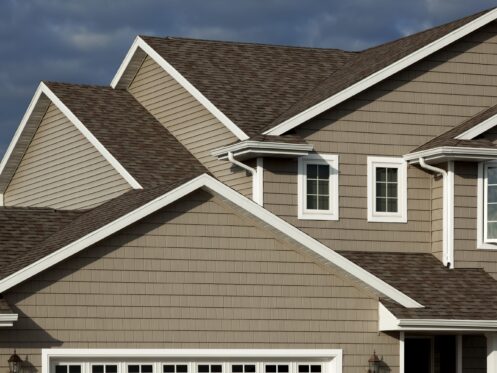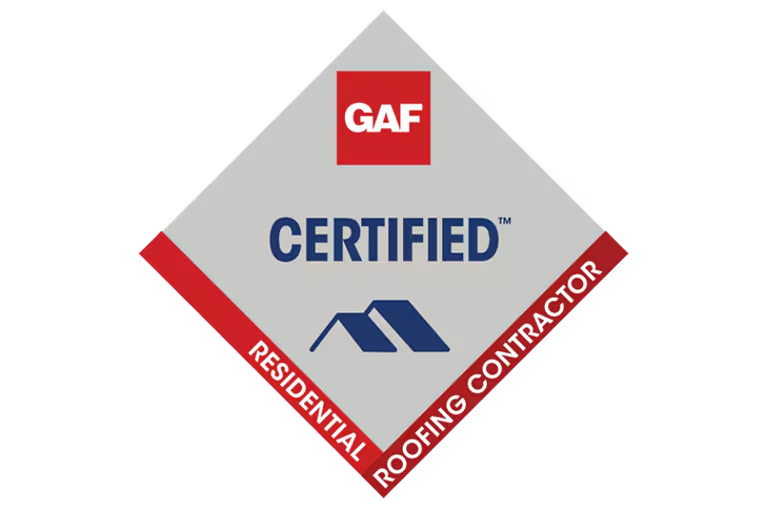Summer in Columbus, OH means warmer temperatures, longer days, and spending more time outside. However, when you’re planning beach days and barbecues, you should also consider the condition of your roof. Relentless UV radiation and intense heat can result in substantial wear and tear. If ignored, this can lead to costly repairs. Getting your roof ready for summer is a crucial component of home maintenance that helps prevent headaches later.
Investing effort and time into getting your roof ready for summer offers numerous advantages, including extended roof life, reduced repair costs, higher property value, enhanced home comfort, and energy savings. Tackle summer preparations proactively to ensure your roof is ready for the most challenging conditions of summer so that it can continue to protect your home efficiently.
Why Preparing Your Roof for Summer Matters
Your roof is the first line of defense your home has against the elements. Summer temperatures on the roof surface can hit 150 degrees Fahrenheit or higher, especially on black roofs. Add to that constant UV radiation, and you can understand why roofing materials start deteriorating fast.
Without proper preparation, minor issues can escalate quickly into serious complications, such as insulation damage, structural weaknesses, and leaks. Preventative steps before summer’s peak maintain roofing integrity, lifespan, and energy efficiency.
Cleaning Gutters and Roof Surfaces
Having a clean roof makes it more likely that your roof’s integrity is intact. Clear out your downspouts and gutters periodically. The spring season can mean accumulations of dirt, twigs, and leaves that clog water pathways. When gutters are blocked, water can pool on the roof. This is particularly troublesome after summer thunderstorms, which increase the chances of mold growth and leaks. Follow this maintenance task by cleaning the roof’s surface.
Remove moss, branches, and algae that retain moisture on the surface of roofing materials. A low-pressure washer or soft-bristled broom can avoid damaging tiles or shingles. Routine cleaning can help prevent material decay, ensuring a roof reflects heat properly instead of absorbing it.
Trimming Overgrown Branches
Trees provide numerous benefits to a property, from enhancing aesthetics to increasing property value. They can also lower the surrounding ambient temperature and provide shade that helps protect the roof. Unfortunately, overhanging branches can be troublesome. Branches that can physically brush against a roof create easy pathways for unwanted pests, scrape away protective layers, and even dislodge shingles.
In the middle of a summer storm, a heavy tree limb might break and cause substantial damage. You should trim branches hanging close to your roof or over it. A minimum of 6 feet of clearance between your roof surface and tree limbs prevents physical damage and reduces the amount of organic debris that falls onto the roof or into your home’s gutters.
Inspecting for Damage
Before the heat of summer fully sets in, have our team conduct a detailed inspection of your roof. Specific signs of wear and tear indicate the roof’s condition. Cracked, curled, and missing shingles are common issues to look for on asphalt roofs. If you have a flat roof, we can check it for signs of bubbling or blistering. Corrosion and rust are serious risks for metal components, and sagging areas might highlight underlying structural problems.
Part of the inspection needs to take place inside your home. We can check your attic and ceilings for mold, water stains, or signs of pests. Finding issues early prevents expensive repairs and complications later, and you can protect your home’s interior from water damage.
UV Damage and Wear and Tear on Shingles
Sunlight produces ultraviolet radiation, which have the potential to break down roofing materials and their chemical bonds over time. Prolonged UV exposure is particularly dangerous to asphalt shingles, as it causes them to dry out and crack. Eventually, they start losing their protective granules.
Unfortunately, even newer roofing materials are susceptible to this issue. Membrane, tile, and metal roofs can suffer from color fading, surface degradation, and stress related to thermal expansion. Knowing how UV damage happens on your roof enables you to take proactive steps that protect your investment by mitigating UV and heat damage each summer.
Applying UV-Protective Coatings
Applying a UV-protective coating is one of the best ways to protect a roof from UV damage. These coatings can provide a waterproof and reflective barrier, shielding roofing materials from water and sun exposure. The options available vary based on the kind of roof you have.
A flat roof can have an elastomeric coating, shingles can have cool roof paints, and metal or tile roofs can have clear sealants. When a layer is applied correctly and professionally, it can substantially lower the surface temperature of your roof. Indoor cooling costs can be reduced, and your roofing materials can last longer.
Creating Shade
You can minimize UV damage and lower temperatures on your roof by reducing the amount of direct sunlight that hits it. There are several ways to create shade. Planting strategically placed trees can help if they are a safe distance away from your home’s roof but block the sun during certain times of the day.
Pergolas and shade sails in outdoor spaces that are adjacent to your house can also help. Awnings over entryways and windows might not directly help the roof, but they can cool the air surrounding your home, enhancing energy efficiency throughout your home.
Installing Reflective Roof Materials
Choosing to install reflective roofing materials is another possibility to consider. Cool roofing technologies include coatings, tiles, and shingles designed to absorb less heat and reflect more sunlight than traditional materials. You can have our team install a reflective membrane on your existing roof, or you can choose light-colored shingles the next time you have your home re-roofed.
Some popular options include cool roof tiles made using concrete or clay, reflective asphalt shingles featuring specialized granules, and light-colored or white thermoplastic polyolefin membranes. Reflective materials can protect your roof and might contribute to reduced energy bills by lowering the need for air conditioning during the summer.
Warm, Bright, and Brutal
The long days and warm weather of summer, along with UV exposure and heat, can be a constant burden on your roof. Fortunately, proper preparation can minimize roof damage while maximizing your roof’s performance. Trimming trees, cleaning gutters, and scheduling a professional inspection to spot damage are all essential steps to take. Further safeguard your home by applying UV-protective coatings and considering reflective materials.
Annual roof inspections are important, as mentioned earlier, but they’re especially valuable before the most extreme seasons. Schedule it before the first summer heat wave so you can be on top of roof maintenance needs and ensure your roofing system can handle the season ahead. This can ensure your roof lasts for its expected lifespan, which is usually 20 to 30 years for an asphalt roof.
The Roof Detective offers roofing services to homes and businesses in Columbus and the surrounding areas of Ohio. Our services include roofing repairs, installation, inspection, and restoration. We also work on gutters and siding. Contact The Roof Detective in Columbus today to prepare your roof for summer heat and UV exposure.





